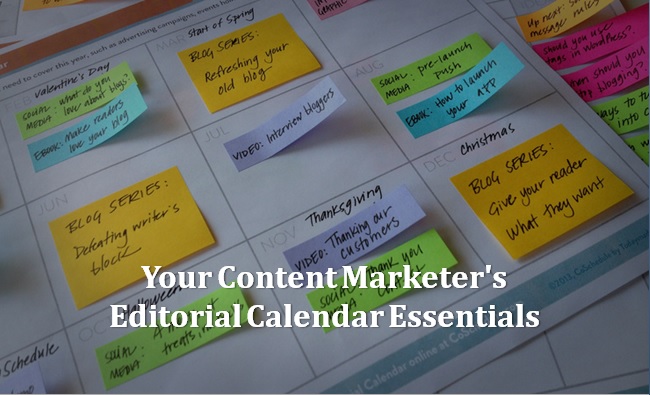

When it comes to digital content marketing, businesses are constantly looking for a better, more efficient ways to drive their content. With new tools, techniques and information constantly brought to your attention, it’s difficult to sift through and see what actually works best for your organization. One of the most consistent tools of a content marketer, the editorial calendar, has overgone many transformations over the years, from a spreadsheet to keep track of what you publish to a cornerstone for managing your content marketing program. To help you keep up with the transformations of the editorial calendar, keep these tips in mind when choosing the right path for your content marketing success.
1. Back to basics
When planning your editorial calendar, start with the key content marketing strategy information to base your content creation on. To stay focused on your company’s marketing goals, keep in mind who you are creating the content for, why you are creating it, what resources you have and how you can stand out from among similar organizations. By keeping these questions in mind, you can more easily determine what content is most critical, as well as the optimum time to post.
2. Set up the calendar
There are many tools available with content calendaring abilities. Some may be basic calendars, others have integrated tools to help your organization’s team manage the editorial process. Base your calendar’s format off of what you need. If you just want to keep track of your posts, an Excel spreadsheet or Google Sheet might work best. For more detailed calendar, other outside tools may be a better fit. No matter which format you choose, the most basic editorial should contain:
3. Calendar is filled and focused
One of the most difficult part of creating and editorial calendar is ensuring it has enough relevant ideas and posts to fill your timetable. Calendar can be used to keep track of ideas for future articles in addition to existing posts, so keep a list of ideas within the calendar as a reference tool for future editorial material. We recommend you keep track of the topic idea, it’s owner, keywords and categories, potential author and the time frame to publish to more easily transform the idea into content for your business.

Kyle Barkins co-founded Tapp Network with more than 10 years in marketing and application development, and calls on his experience to enhance the usability of web and mobile applications for high-conversions for our clients.